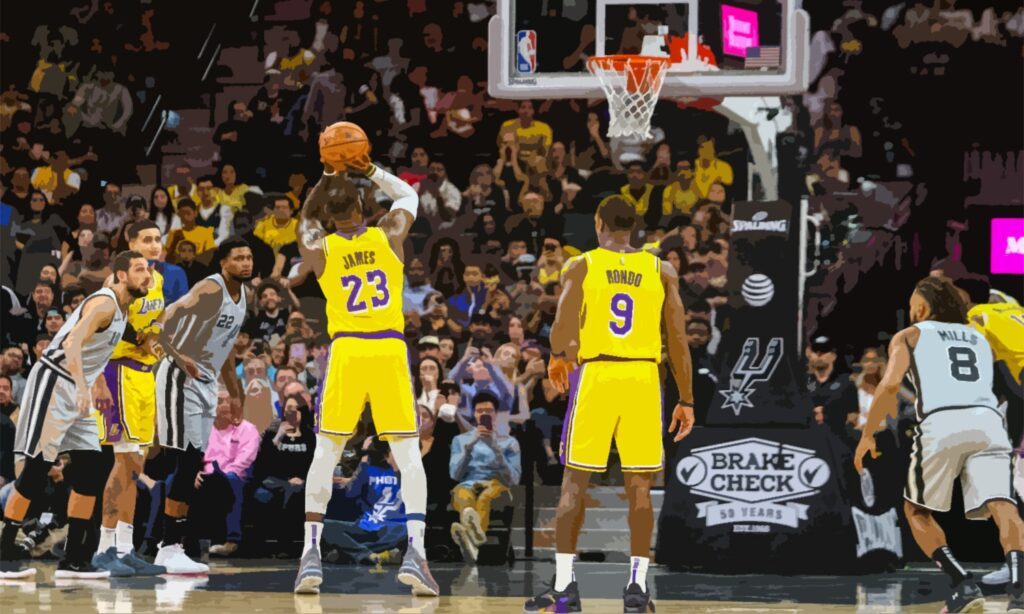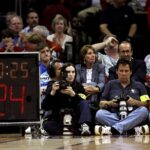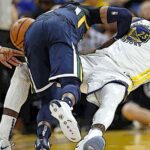Basketball is a very physical sport regardless if it is considered “non-contact”.
During game play, the offensive team is trying to score baskets, while their opponents are trying to resist.
When ball possession changes hands, the teams swap on offense and defense.
This interaction occurs hundreds of times over the course of a game.
And with the objective of outscoring your opponents to win the match, play can get chippy.
Which is why every league, including the NBA, have rules in place for illegal contact.
The most basic form of contact is known as a personal foul, which every player is entitled to six per game.
Once an individual player reaches the sixth foul, they are immediately expelled from the game.
Meanwhile, there are rules in place when the team collectively reaches a certain number of fouls in a quarter or half.
The result of this foul count leads the other team “in the bonus”.
What is bonus in Basketball?
In basketball, a "bonus" refers to a team entering the free-throw bonus situation during a specific period. When a team accumulates a set number of team fouls (5 or more) in a quarter or half, their opponents gain bonus opportunities. This means they shoot free throws for any additional non-shooting fouls committed by the fouling team.
In other words, teams “in the bonus” are awarded free throws regardless if the foul was called on a shot attempt or not.
So, now on top of tracking individual player foul counts, the coaching staff must concern themselves for the collective team situation.
Awarding your opponents with automatic free throws is a recipe for disaster.
Your opponents are aware of that and will be more bold in their offensive tactics. The idea is to keep drawing fouls on the troubled defending team.
What do they mean by Double Bonus?
While “bonus” is commonly referred to teams reaching foul trouble in a single quarter, double bonus applies for the entire half.
Double Bonus refers to a team reaching free-throw situation when their opponents have accumulated 10 personal fouls within the half.
Just as in the “bonus” in a subsequent quarter, the double bonus will reset during the second half of a game.
Bonus vs One-and-One Free Throw
In the NCAA, the rules for bonus are slightly different as teams play only two halves rather than four quarters in a game.
Once a team reaches 10 fouls in a half, their opponent is “in the bonus”.
However, prior to that, teams are awarded one-and-one free throws as of the 7th foul.
That is, when a team is charged with their seventh foul, the opposing team is rewarded with a free throw attempt.
If they score on the first free throw, they are awarded a second try.
Should they miss on the first attempt, the ball is considered live and either team can gain possession.
As a note, the one-and-one rule is void as of the tenth foul. That’s when the opposing team is automatically rewarded two free throws for being “in the bonus”.
Bonus Strategy
While being in the bonus rewards your opponents with automatic free throws, teams can employ a strategy to their benefit.
This strategy is often used at the end of the game to prevent the clock from running.
If a team is trailing in score, it’s better to give your opponents two free throws rather than allowing them to run down 24-seconds (or more) on the clock.
While it might be easier to sink two baskets on free throws, it’s not always a guarantee.
In some cases, the team in foul trouble will purposely leave the weakest shooter open on the in-bound so that they retrieve the ball and subsequently are fouled.
That way, there is a chance that they miss one or both of the free throw attempts.
For those that grew up watching the NBA in the 90s and 00s, this tactic was employed on Shaquille O’Neal due to is overall low free throw percentage.
It makes a big difference in whether the trailing team needs to sink a two- or three-pointer to close the gap.
Final Thoughts
The main downside to teams in the bonus is that it completely kills the momentum of the game.
You’ll often see teams reaching foul trouble when the match is almost at its end.
Coaches know that the Bonus Strategy will be employed and will prepare accordingly.
As a result, both teams will use their timeouts to draw out some plays and give their players a rest.
While you might see two and half minutes left on the game clock, it will play out much longer in real time.
Throw in the fact that we’ve reached playoffs and it becomes a real nail biter.
These disruptions cause real time anxiety for the fans.
Trust me, I’ve been there.
Nonetheless, these are the rules and teams will try using every situation in their benefit.
So don’t think that your team is in the clear simply because they are in “bonus” territory.






